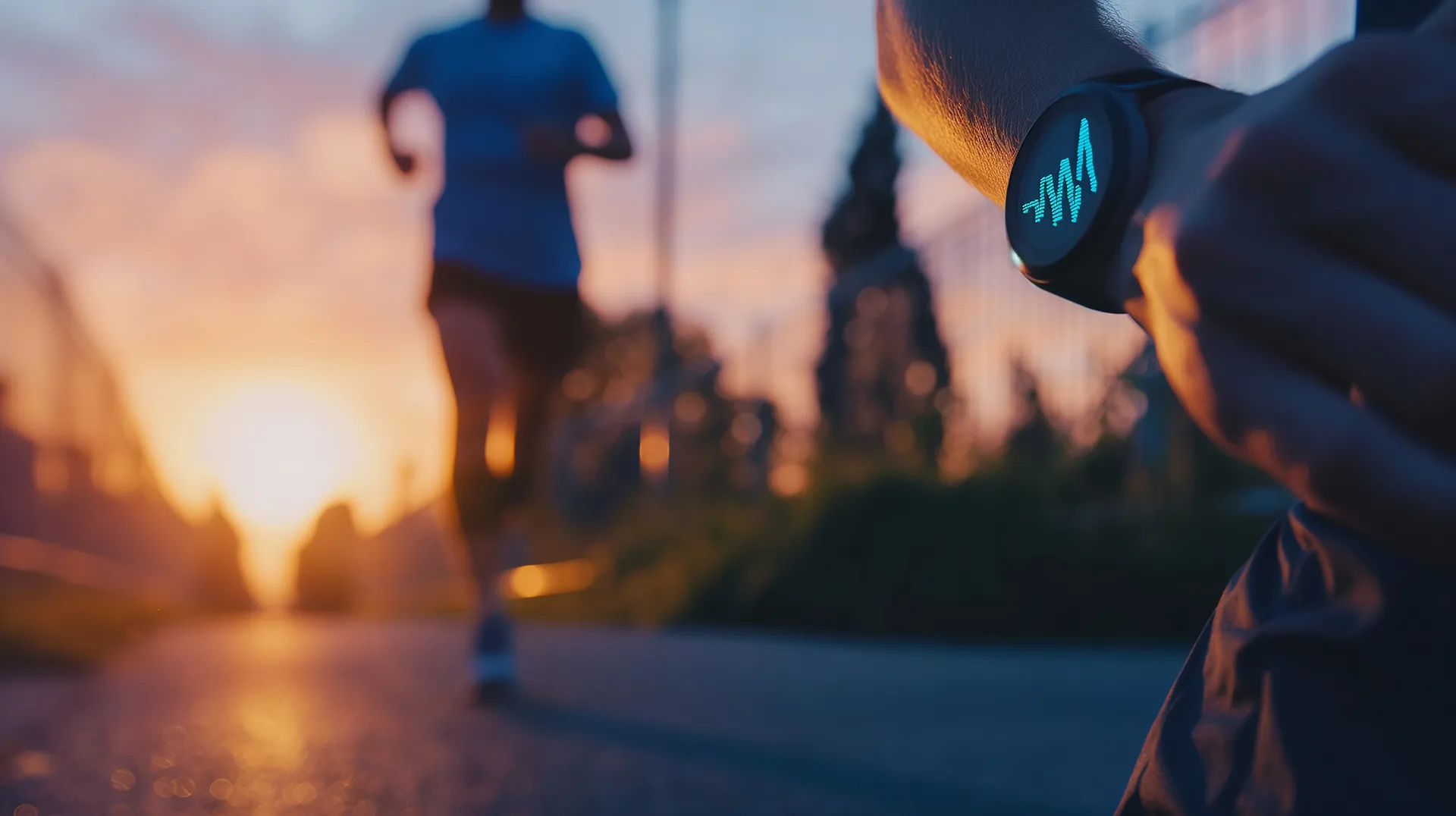Sleep isn’t optional. It’s a performance base layer. And one of the most popular “sleep helpers” just got a hard look.
Earlier this week, major outlets covered a new analysis presented at a leading cardiology conference: among more than 130,000 adults with chronic insomnia, long‑term prescription melatonin use (≥1 year) was associated with higher rates of heart failure, heart‑failure hospitalization, and all‑cause mortality over five years compared to non‑users. Association is not causation—but it’s a real signal that deserves adult supervision.
This doesn’t make melatonin “bad.” It does mean we treat it like we treat training load and nutrition: with context, not auto‑pilot.
What Changed in the Data—and What Didn’t
Who was analyzed: Adults with chronic insomnia drawn from a large health‑records network. Roughly half had evidence of prescription melatonin use for ≥1 year.
The headline association: Melatonin users showed higher odds of heart failure, HF hospitalization, and death vs. non‑users during follow‑up.
Important caveats:
- It’s observational—it cannot prove melatonin causes harm. People with tougher insomnia or higher cardiovascular risk may be more likely to receive melatonin in the first place.
- Dose and formulation varied, and many people use melatonin over‑the‑counter; some “non‑users” could still have used OTC products the dataset didn’t capture.
- These are preliminary findings from a scientific meeting; peer‑reviewed publication will matter.
Takeaway so far: treat this like an early‑warning light, not a verdict.
How Melatonin Actually Works (Plain English)
Melatonin is a timing signal, not a sedative. Your brain’s clock (in the suprachiasmatic nucleus) uses light and routine to decide when to release it from the pineal gland. In darkness, melatonin rises to say, “night mode.” When light hits your eyes in the morning, levels drop to “day mode.”
Two practical implications:
- Timing beats dosage. A small dose before your natural rise (often 2–4 hours before bed) nudges the clock earlier. A larger dose late can leave you groggy without improving sleep quality.
- Environment decides the effect. Bright evening light blunts natural melatonin; a cool, dark room amplifies it. Supplements can’t fully outrun bad timing and bright screens.
How to Read This if You’re Playing the Long Game
You’re playing for energy, cognition, cardiovascular resilience—and a long runway. Here’s a practical frame.
Build the base before you tinker
Most of the “can’t fall asleep” story lives in timing, light, temperature, and load. Boring, powerful, repeatable.
- Fixed wake time (yes, weekends).
- Bright outdoor light within 30 minutes of waking; dim/warmer light after sunset.
- Cool room (roughly low‑to‑mid‑60s °F) and a wind‑down cue that isn’t a screen.
- Put exercise earlier when possible; cap late caffeine and alcohol.
- If you’re stuck, consider CBT‑I or a sleep‑savvy clinician; timing problems (jet lag, shift changes) respond very differently than chronic insomnia.
Treat melatonin like a scalpel, not a staple
This study doesn’t demand a bonfire of gummies. It asks for intentionality.
- Start with a clear purpose (e.g., circadian reset), lowest effective dose, and a defined window—not “forever.”
- Re‑evaluate every few months: are you using it because it still solves a specific problem, or because it’s inertia?
- Coordinate with your clinician if you’ve got cardiovascular risk, possible sleep apnea, or you’re stacking other sleep meds.
Sleep choices in a heart‑health frame
Poor sleep can strain the cardiovascular system (blood pressure, heart rate, inflammation). Whether melatonin is a driver or just a marker of tougher sleep and higher baseline risk, the smart move is to optimize both:
- Build an aerobic base (easy zone time + brisk walking/hills/cycling).
- Keep strength in rotation (muscle is metabolic insurance).
- Aim for supportive body composition, stress hygiene, and steady nutrition.
- Align sleep timing with your personal clock as best you can.
Numbers are instruments, not referees
A small toolkit keeps you honest without turning nights into lab reports:
- RHR & HRV: watch trends, not trophies. A steady baseline and predictable rebound after hard blocks beat random spikes.
- Subjective feel: sleep latency, wake‑after‑sleep‑onset, next‑day alertness.
- Trigger log: travel, alcohol, late meals, heat—costs you can actually plan around.
Common Pitfalls (and Better Defaults)
- Too much, too late. Mega‑doses near bedtime can fragment sleep and leave you foggy. Many older adults do better with smaller doses earlier in the evening.
- Wrong form. Fast‑release helps with falling asleep; extended‑release aims at staying asleep. If you wake at 3 a.m., an earlier lifestyle fix usually beats stacking more pills.
- Gummy traps. Sugar‑heavy gummies plus late‑night screens create the very arousal you’re trying to quiet.
- Expecting it to solve stress. Melatonin can cue timing; it won’t silence a nervous system revved by caffeine, conflict, or doom‑scrolling.
Travel & Shift Changes: a 48‑hour Micro‑Guide
When the goal is shift (not sedation), use timing and light with surgical intent.
If flying east (you need an earlier clock):
- Two evenings before travel: dim lights earlier; take a small dose 3–4 hours before target bedtime; avoid bright screens after.
- In destination time zone: morning sunlight; short afternoon walk; early dinner; repeat small dose only if needed for two nights.
If flying west (you need a later clock):
- Delay bedtime; keep evening lights brighter; skip melatonin initially; get strong morning light on arrival and a brief evening stroll to extend the day.
Night shifts:
- Use bright light during the shift; block morning light on the commute home; keep the room cold and cave‑dark; tiny melatonin doses can help initiate the daytime sleep period—again, for a defined window.
Two Weeks to Steady the Ship
Week 1: Context sweep. Lock wake time; front‑load daylight; cool the room; park the phone; move daily; skip late caffeine.
Week 2: Precision pass. Keep the Week‑1 rules. If sleep still lags, talk to your clinician about short, purpose‑built melatonin use—or other approaches (light timing, CBT‑I, magnesium glycinate, etc.). The goal is rhythm, not reliance.
Why We brought in Carl Pradelli (NatureCity)
We had Carl Pradelli, founder of NatureCity, on the Performance Driven Living podcast to talk about what “intentional supplementation” looks like past 50: sourcing, transparency, and building stacks that support—not replace—the big rocks (sleep discipline, training, nutrition). If supplements are in your plan, this is the mindset you want: https://youtu.be/RE0plmAB4dI
The Take-home You Can Use Tonight
- Treat melatonin like you treat a deload or a tempo run: on purpose, for a reason, on a timeline.
- Guard the fundamentals that make sleep predictable.
- Keep an eye on the cardio context while you experiment.
- Let trends (and how you feel) drive decisions—not headlines.
If you missed our full conversation, catch Carl Pradelli on the Performance Driven Living podcast for a smart look at supplements that actually earn their place. Then, explore NatureCity if you’re vetting clean, thoughtful options. Because the best sleep upgrade isn’t a miracle pill—it’s a system that lets you wake up dangerous, tomorrow and ten years from now.




